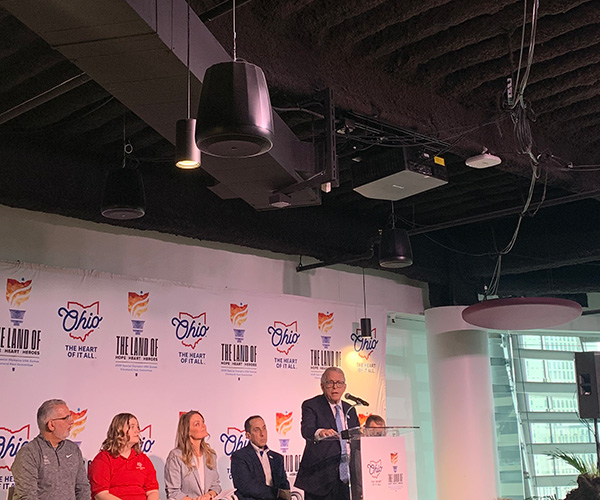The large, gridded play sheet is covered in blue, red and black ink. The down and distance (first and 10) is indicated in the top left. Under that, a note that says "Plays [Los Angeles Rams head coach Hamp] Pool thinks will beat this defense."
On display at the Pro Football Hall of Fame's Moments, Memories and Mementos Gallery, the play sheet dates back to 1954. The circles of the Rams offense show a running back sweeping left as offensive guards pull to be lead blockers. A receiver runs an out pattern.
Players' numbers and names provide instructions for the Browns defense. "#22 [safety Ken] Konz slides fast. Note: [right end] ... would be wide open in this route." A big, red arrow points directly to the receiver running an out pattern.
Brown's study of game film and doctorate-level approach to preparation was just some of what set him apart from his contemporaries and what made the Browns the Browns, the most dominant football team in the 1940s and '50s.
"Right away, Paul Brown was a huge success," says Jason Aikens, collections curator at the Pro Football Hall of Fame. "You watch the films of his teams, and you see it kind of resembles the game of today. Before that, it's like, What the heck is going on?"
It's impossible to detail all of the changes Brown made to the game in such a short space. But here it goes.
He was the first coach to make his assistants full-time employees. He reintegrated professional football by signing locals Marion Motley and Bill Willis. He was a pioneer of the modern passing game by creating pass blocking (which was different from run blocking), instructing his receivers to run specific routes and his quarterbacks to throw to a spot on the field, not a receiver. He helped develop the face mask (to protect Otto Graham's mug). He was the first coach to call offensive plays from the sideline by sending in messenger guards. He made his players study scouting reports like schoolkids. He invented the draw play, but that one happened on accident.
"I toured his granddaughter once," Aikens says. "I had to stop myself from going on and on and on about him. I was like, Your grandfather did this. Your grandfather did that. He was just so iconic."

.jpg?sfvrsn=d67cfd8c_1&w=640&auto=compress%2cformat)

